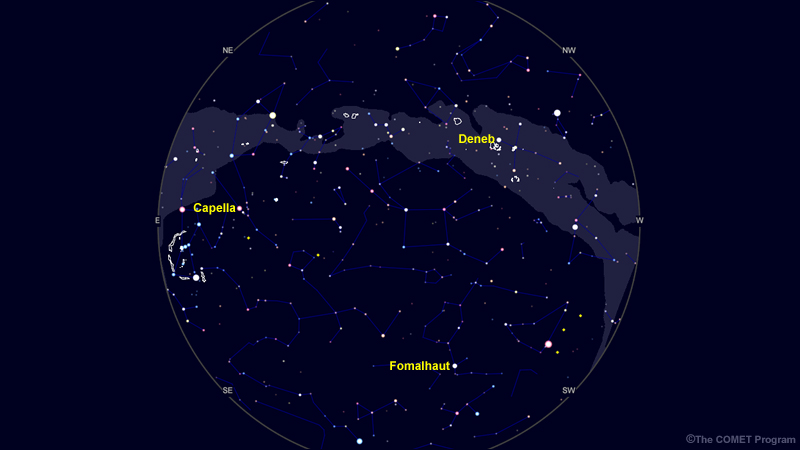A Day in the Life of a Navigator » Three-Star Fix, Morning
The first star in our three-star fix is Capella, with sextant altitude 29 degrees 46 minutes and the same data used earlier to demonstrate the Intercept Method. Here, the sight reduction is performed and Chief Sheedy plots the LOP for Capella.

The three stars observed are Capella, Deneb, and Fomalhaut. Let’s say each were observed at the same time, at 8:00:00 UT. Let’s reduce Capella first. Keen viewers will notice that we already reduced Capella in the Intercept Method segment of this module, so we will go through the steps quickly. If you need further explanation of a step, go back to that segment.

Chief Sheedy: The body is Capella. Greenwich Mean Time is 0800, 00 seconds. Index correction is 0.4 on. Our dip we get from the Nautical Almanac because our height of eye is 10 feet. Dip for height of eye is 10 feet so we have to interpolate between 9.8 feet and 10.5 feet: -3.1. The sum of the index correction and the dip is -3.5. Our sextant observation was 29 degrees 46 minutes. Our adjusted altitude is 29 degrees 42.5. We go to the Nautical Almanac to Stars and Planet, Apparent Altitude and follow it down. It falls between 28 degrees 54 minutes and 30 degrees 22 minutes. We go to the right to the actual correction, -1.7. Once we apply all the corrections‐altitude corrections, dip, and index correction, we now have our Ho, or Height observed: 29 degrees 40 minutes decimal 8.
We now have our computed altitude, as well as the azimuth, from the U.S. Naval Observatory website. We’re going to put it on the strip form. Computed altitude was 29 degrees 28 decimal 8. We bring down our observed altitude 29 degrees 40 decimal 8. The difference between the two is 12 minutes. Since the height observed is more than the computed altitude, it’s going to be “toward”—remember the phrase Ho-Mo-To. The azimuth from the U.S. Naval Observatory website is 051.5.